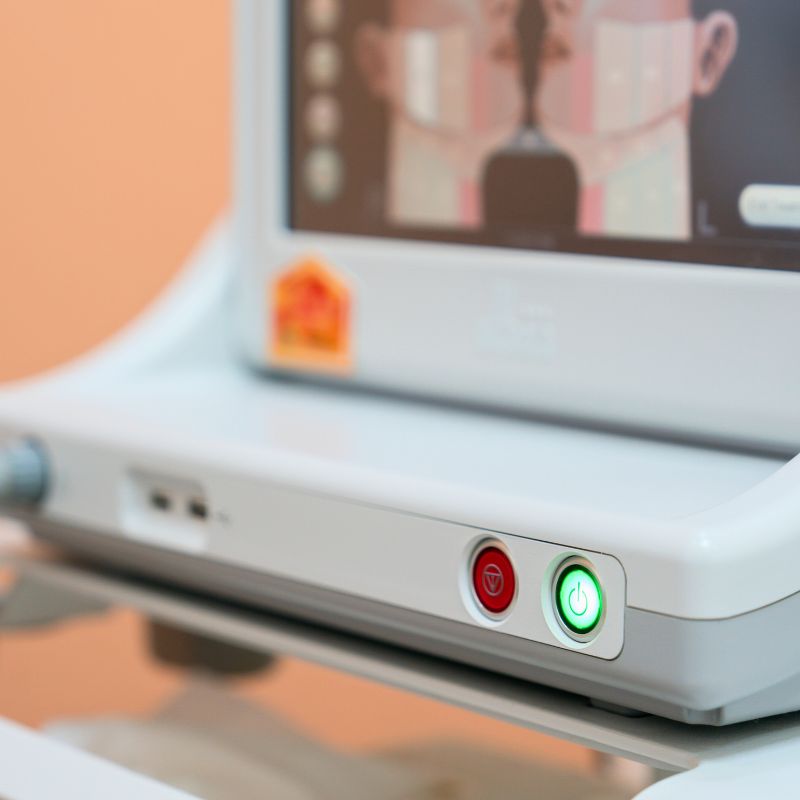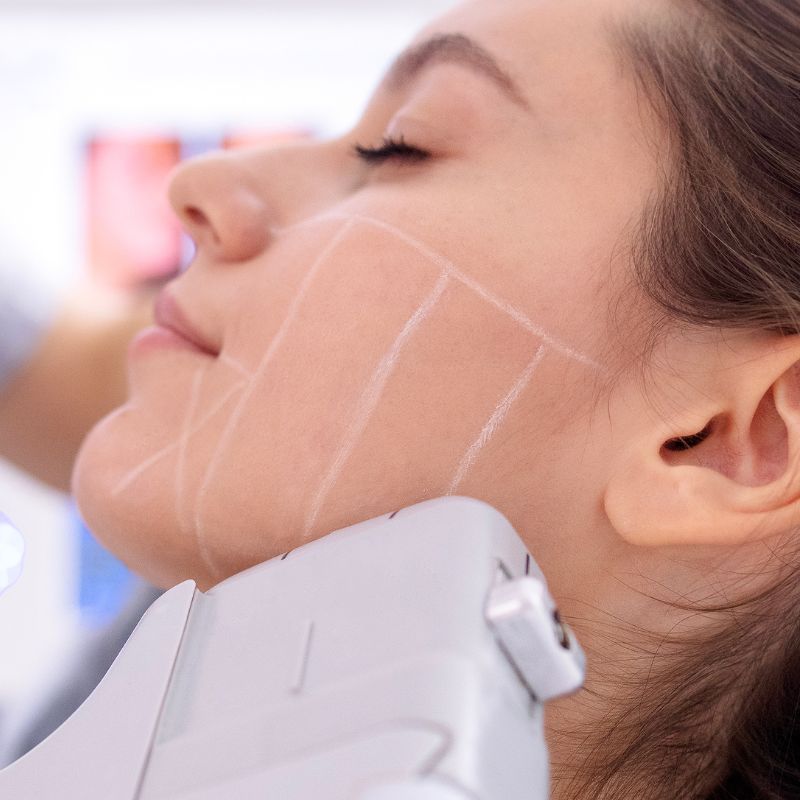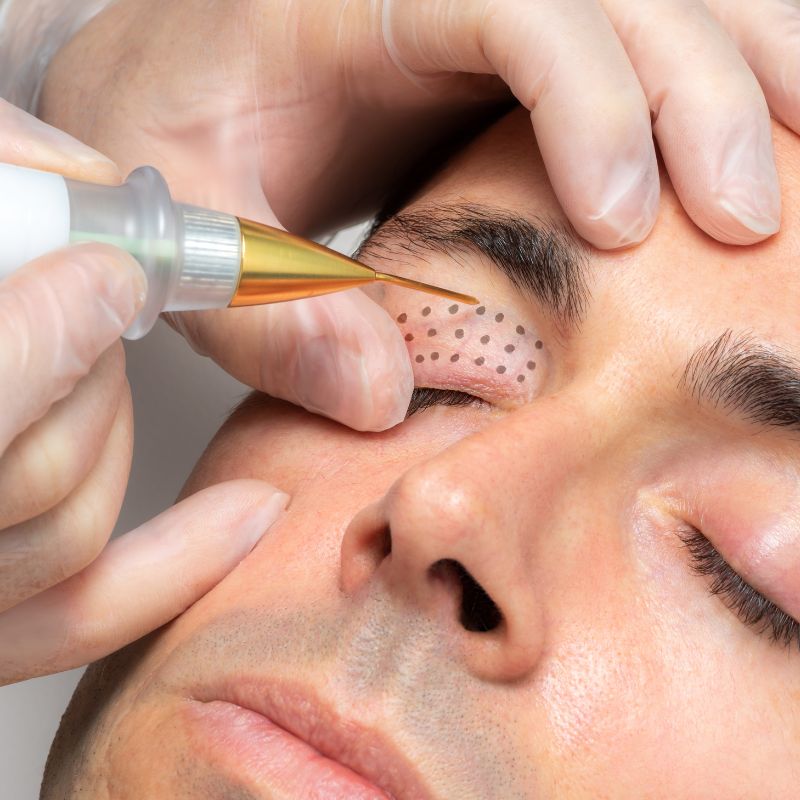HIFU - High Intensity Focused Ultrasound

HIFU treatments
HIFU (High-Intensity Focused Ultrasound) is a non-invasive cosmetic treatment used for facial rejuvenation and tightening. It uses ultrasound energy to stimulate the deep layers of the skin, particularly targeting the SMAS (Superficial Musculoaponeurotic System) layer, which is the same layer addressed in surgical facelifts.
How HIFU Works
Ultrasound Energy: The treatment delivers high-frequency ultrasound waves deep into the skin’s layers, heating the tissue at specific depths without affecting the skin’s surface.
Collagen Production: The heat from the ultrasound energy triggers a natural healing response, leading to the production of new collagen over time. This collagen helps to firm and lift the skin.
Gradual Results: The effects of HIFU treatment are not immediate but develop gradually over the course of a few months as collagen builds up in the treated areas.
Benefits
Non-Invasive: Unlike surgical facelifts, HIFU is non-invasive, meaning there are no incisions or stitches.
Minimal Downtime: Patients can typically return to their normal activities immediately after the procedure.
Long-Lasting Results: The results can last for about a year or more, depending on the individual’s skin condition and aging process.


About HIFU
HIFU is best suited for individuals with mild to moderate skin laxity who are looking to improve skin tone and reduce sagging without undergoing surgery. It’s often used as a preventative measure for those starting to notice early signs of aging.
However, it might not be as effective for individuals with very loose or sagging skin, who may require more intensive treatments like surgery.
Plasma fibroblast therapy, also known as plasma pen treatment, is a non-invasive cosmetic procedure that aims to tighten and rejuvenate the skin. It is used to reduce the appearance of wrinkles, fine lines, scars, and other skin imperfections without surgery. Here’s how it works.
How Plasma Fibroblast Therapy Works
Device and Plasma Creation: The procedure uses a specialized handheld device called a plasma pen. This device generates a small, controlled electrical arc or plasma. The plasma is created by ionizing gases in the air, producing a small amount of energy.
Targeting the Skin: When the plasma pen is brought close to the skin, it doesn’t touch the surface directly. Instead, the plasma arc creates a tiny, controlled wound or micro-trauma on the skin’s surface. This process heats the skin, causing the tissue to contract and tighten.
Stimulation of Fibroblasts: The small wound stimulates the production of fibroblasts, which are cells responsible for producing collagen and elastin—key components of healthy, youthful skin. As these fibroblasts are activated, they begin repairing the micro-trauma by generating new collagen.
Healing and Rejuvenation: Over the following weeks, as the skin heals, the increased collagen production leads to firmer, tighter, and more youthful-looking skin. The procedure can help to improve skin texture, reduce sagging, and minimize the appearance of scars and wrinkles.


Benefits
Non-Surgical: It provides an alternative to surgical procedures like facelifts, offering similar results with less downtime and risk.
Minimal Downtime: Although there may be some swelling, redness, and scabbing, these usually resolve within a few days to a week.
Long-Lasting Results: The effects of the treatment can last for several months or even years, depending on individual skin type and care.
Risks and Considerations
Side Effects: Possible side effects include swelling, redness, scabbing, and hyperpigmentation (especially in darker skin tones).
Recovery: While it’s minimally invasive, some aftercare is necessary, such as avoiding sun exposure and keeping the treated area clean.
Not Suitable for All Skin Types: People with certain skin conditions or darker skin tones may not be ideal candidates due to the risk of pigmentation issues.
Procedure
Duration: A typical HIFU session can last between 30 minutes to 1.5 hours, depending on the areas being treated.
Sensation: Patients may experience some discomfort or a prickling sensation during the procedure, but this is generally tolerable.
Post-Treatment: There might be slight redness or swelling, but these side effects usually subside within a few hours.
Areas Treated
Plasma Fibroblast Therapy targets various facial areas including the forehead, eyebrows, cheeks, jawline, and neck to address wrinkles, sagging, and fine lines. The treatment also extends to the décolletage (upper chest), helping to improve sun damage, age spots, and crepey skin. By stimulating collagen production in these regions, the therapy aims to provide a more youthful appearance without invasive procedures.

Drop Us a Line
Leave us a message and we will get back to you as soon as possible. We’d love hearing from you.
